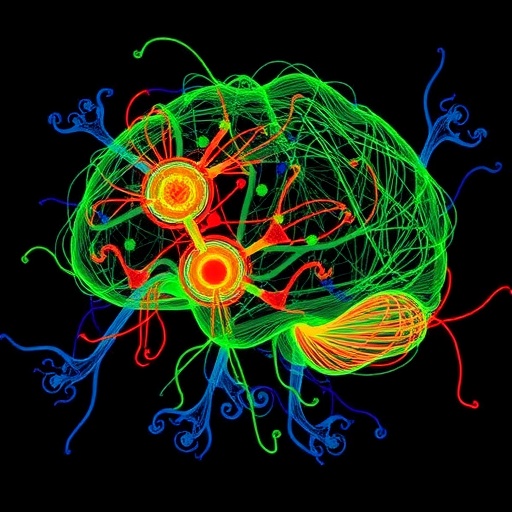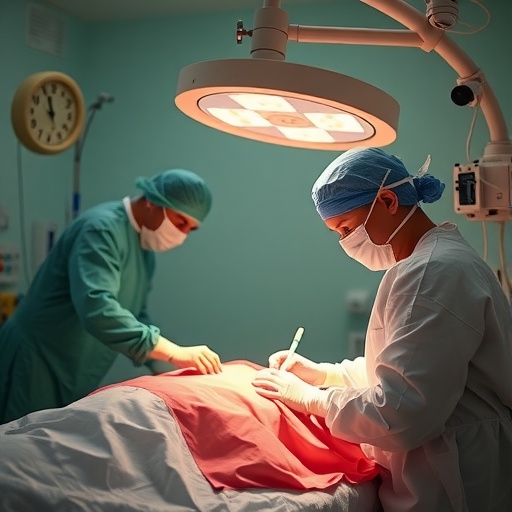In a groundbreaking advancement at the frontier of neuroscience and optical engineering, researchers have unveiled a novel methodology that harnesses holographic ensemble stimulation combined with model-based compressed sensing to rapidly decode the intricacies of neural circuitry. This innovative approach stands poised to revolutionize how scientists understand the fundamental wiring of the brain, potentially accelerating discoveries in neural computation, neuroprosthetics, and therapeutic interventions for neurological disorders.
Neural circuits, the complex webs of interconnected neurons that underlie all brain function, have long been an enigma due to their dense and intricate connectivity patterns. Traditionally, mapping these circuits has been an arduous and time-consuming process, restricted by limitations in spatial resolution, stimulation specificity, and analytic throughput. The novel technique introduced by Triplett, Gajowa, Antin, and their colleagues addresses these hurdles by integrating advances in holographic light patterning with computational algorithms rooted in compressed sensing theory.
Holographic stimulation, as utilized in this context, involves projecting three-dimensional light patterns to simultaneously activate multiple neurons within dense neural populations with unprecedented spatial and temporal precision. This allows researchers to stimulate ensembles of neurons in physiologically meaningful configurations. However, the challenge has been to decipher which neurons, when perturbed, cause specific downstream effects, thereby mapping out the circuitry. The fusion with model-based compressed sensing offers a powerful analytic tool that operationally exploits the sparsity inherent in neural connectivity.
Compressed sensing is a mathematical framework designed to reconstruct sparse signals from far fewer measurements than traditionally required. In the context of neural circuits, where only a subset of potential connections are active or functionally relevant, this sparsity assumption enables rapid and accurate inference of connectivity from minimal data. By applying this theory alongside machine learning and system identification techniques, the research team was able to reconstruct detailed neural maps from holographically stimulated responses with remarkable speed and fidelity.
This approach fundamentally transforms the data acquisition and analysis landscape in systems neuroscience. Instead of probing each neuron or connection sequentially—a method that can take prohibitively long periods—the method stimulates many neurons in carefully designed patterns. These patterns are specifically chosen based on prior models that guide the compressed sensing algorithm, thereby making the inference process both data-efficient and robust to noise.
One key innovation of this work is the dynamic interplay between experimental stimulation protocols and computational model updates. The iterative design of holographic stimulation patterns, informed by the model’s evolving representation of the circuitry, creates a feedback loop that accelerates learning. This adaptive sampling strategy ensures that every new stimulation targets the most informative neural ensembles, refining the connectivity map with minimal experimental overhead.
Crucially, the researchers validated their approach not only in silico using realistically simulated neural networks but also in ex vivo brain slices, demonstrating its practical feasibility. By combining optogenetic stimulation of neural populations with calcium imaging or electrophysiological readouts, they successfully reconstructed functional connectivity matrices that closely mirrored ground truth architectures established through alternative, more labor-intensive methods.
The implications of this technology extend well beyond basic neuroscience. Rapid and accurate mapping of neural circuits could dramatically enhance our ability to develop brain-machine interfaces that communicate with neural circuits in a precise and adaptable way. It also holds promise in clinical diagnostics, where understanding circuit alterations in diseases such as epilepsy, autism spectrum disorders, or schizophrenia could lead to targeted interventions.
Moreover, this methodological framework is highly scalable, with potential applications ranging from small microcircuits to large-scale brain regions. The holographic stimulation platform is compatible with current two-photon microscopy setups and will benefit from ongoing advances in light modulation hardware that push spatial resolution and temporal precision even further.
The fusion of physical optical technology with cutting-edge computational methods epitomizes the multidisciplinary nature of modern neuroscience research. This synergy enables experiments that were previously impossible due to either technical constraints or overwhelming data complexity. The team’s accomplishment represents a blueprint for how experimental design and data analytics can be co-optimized to glean insights into the brain’s inner workings efficiently.
One exciting prospect lies in adapting this approach to live, behaving animals. Although initial demonstrations were conducted in brain slices, future iterations could monitor how circuit dynamics evolve during learning, memory formation, or behavioral adaptation, providing real-time maps of neural plasticity. Such capabilities would deeply enrich our understanding of cognition and inform novel therapeutic strategies.
Beyond its immediate neuroscience applications, the conceptual basis of model-based compressed sensing combined with holography could inspire analogous methods in other biological systems and scientific domains characterized by complex interactions and sparse connectivity. For instance, similar frameworks might be deployed in genetic regulatory networks or ecological interaction maps, where identifying influential nodes rapidly remains a key challenge.
The broad impact of this study lies not only in its technical sophistication but also in its potential to democratize circuit mapping. By substantially reducing the experimental time and computational resources required, more laboratories worldwide can adopt and adapt these techniques, accelerating the pace of discovery across fields tied to complex networked systems.
Furthermore, the team’s publicly shared algorithms and open-source data frameworks ensure that the scientific community can build upon and refine these methods. This communal approach will likely spur iterative improvements, fostering a rich ecosystem of software and hardware innovations directed at neural circuit interrogation.
Critically, the success of this technique hinges on the assumption of sparsity in neural connections, which, while widely accepted, may vary across brain regions or developmental stages. Further research is needed to explore how different neural architectures modulate the efficacy of compressed sensing-based inference and to delineate the boundaries of the approach’s applicability.
In conclusion, the integration of holographic ensemble stimulation with model-based compressed sensing marks a transformative step in neuroscience tools. It unlocks a pathway to rapidly decode the complex synaptic landscapes that underlie brain function, offering new vistas on the enigmas of cognition, disease, and neural computation. As implementation spreads and refinements accumulate, this method promises to become an indispensable asset in the neuroscientist’s toolkit, bridging experimental innovation with computational precision in unprecedented ways.
Subject of Research: Rapid mapping and inference of neural circuitry using holographic ensemble stimulation combined with model-based compressed sensing algorithms.
Article Title: Rapid learning of neural circuitry from holographic ensemble stimulation enabled by model-based compressed sensing.
Article References:
Triplett, M.A., Gajowa, M., Antin, B. et al. Rapid learning of neural circuitry from holographic ensemble stimulation enabled by model-based compressed sensing. Nat Neurosci (2025). https://doi.org/10.1038/s41593-025-02053-7
Image Credits: AI Generated
Tags: advancements in optical engineeringchallenges in mapping neural circuitscompressed sensing in neurosciencedecoding neural circuitryfast neural circuit mappingholographic ensemble stimulationintricate neural connectivity patternsmodel-based stimulation techniquesneural computation breakthroughsneuroprosthetics innovationsspatial and temporal precision in stimulationtherapeutic interventions for neurological disorders





